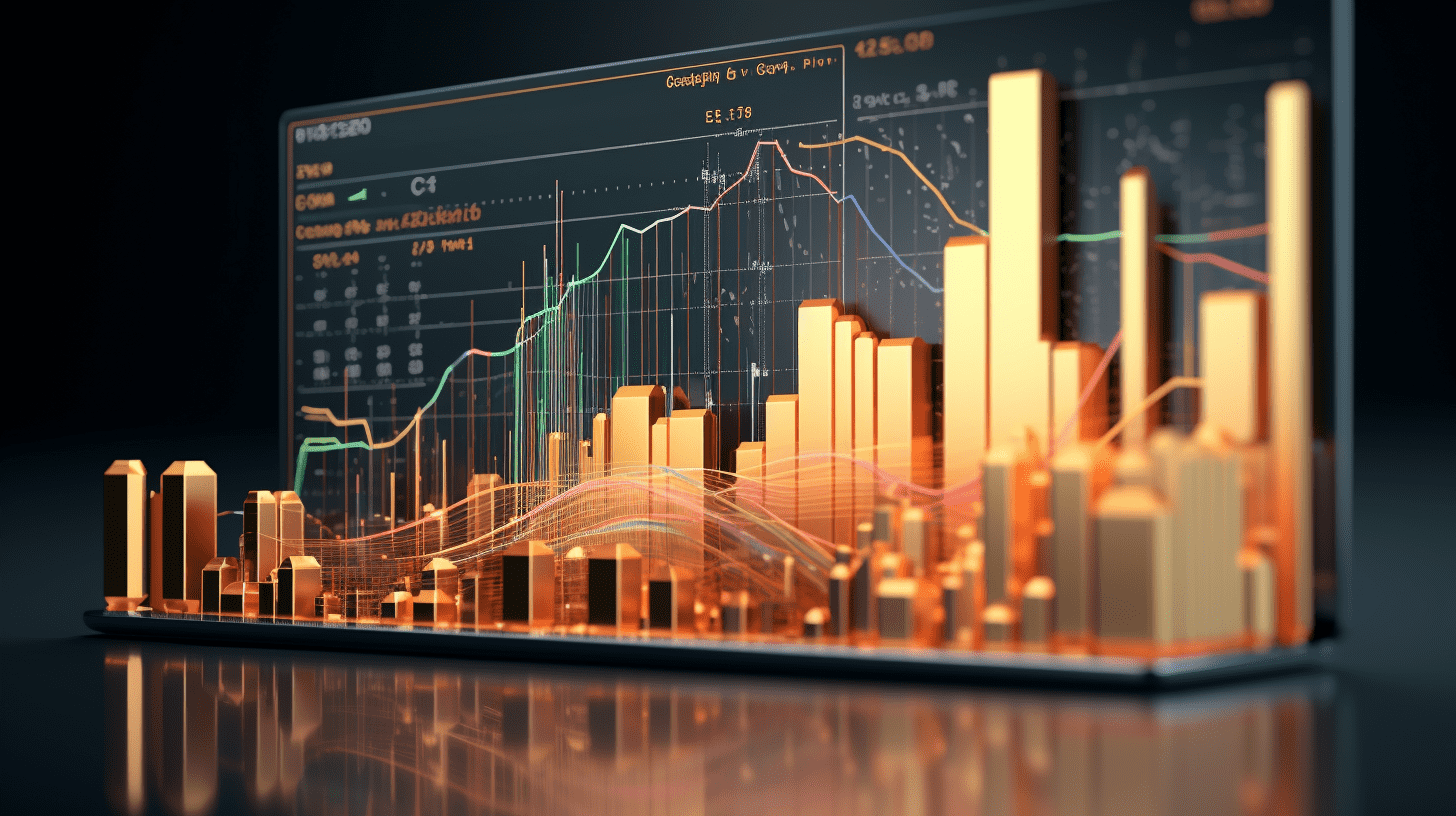
Great Wall Securities: The safety margin of the photovoltaic sector is relatively high, paying attention to opportunities for overall market valuation improvement.
Dongfang Securities released a research report stating that the photovoltaic sector has gone through more than two years of adjustment, and currently the PB valuation is at the bottom range in nearly ten years. After more than two years of adjustment, pessimistic expectations have been adequately reflected, the market has fully reacted to negative news in the sector, and in the process of fundamental bottoming, sector adjustment, and increasing market risk appetite, the sector has a high safety margin. It is recommended to focus on leading enterprises with relatively high certainty in annual performance and companies with the potential for gradual profit recovery.
The main points of Dongfang Securities are as follows:
Domestic new installed capacity of photovoltaics maintained growth in the first nine months, and from January to September 2024, the new installed power generation capacity in China was mainly dominated by photovoltaics.
On October 21st, the National Energy Administration released statistics on the power industry from January to September. From January to September 2024, China's new installed photovoltaic capacity was 160.88GW, an increase of 24.77% year-on-year. Among them, in September, 20.89GW of new photovoltaic capacity was added, a year-on-year increase of 32.38%. From January to September 2024, the new installed power generation capacity in China was primarily dominated by photovoltaics.
The total new installed power generation capacity in China from January to September 2024 was 242.58GW, an increase of 31.65GW year-on-year, including 7.97GW of new hydropower capacity, an increase of 0.09GW year-on-year, 33.43GW of new thermal power capacity, a decrease of 6.01GW year-on-year, 1.19GW of new nuclear power capacity, the same as last year, 39.12GW of new wind power capacity, an increase of 5.64GW year-on-year, and 160.88GW of new photovoltaic capacity from CECEP Solar Energy, an increase of 31.94GW year-on-year. Looking at the proportion of new power generation capacity of various types in the first three quarters of 2024, photovoltaic new installations are in an absolute leading position, with the proportions of photovoltaics, wind power, nuclear power, thermal power, and hydropower being 66.32%/16.13%/0.49%/13.78%/3.29%.
In the first three quarters of 2024, the new installed photovoltaics were slightly more distributed than centralized, with commercial and industrial distributed installations performing excellently.
In terms of the structure of photovoltaic installations, in the first three quarters of 2024, China's new centralized photovoltaic installations were 75.66GW, accounting for 47.03%, and distributed installations were 85.22GW, accounting for 52.97%, of which residential photovoltaic installations were 22.8GW, accounting for 14.17%, and commercial and industrial photovoltaic installations were 62.42GW, accounting for 38.8%. By the end of the third quarter of 2024, China's cumulative grid-connected photovoltaics were 772.25GW, with centralized photovoltaics accounting for 430.35GW, or 55.73%, and distributed photovoltaics accounting for 341.91GW, or 44.27%, with residential photovoltaics accounting for 138.52GW, or 17.94%, and commercial and industrial photovoltaics accounting for 203.39GW, or 26.34%. Compared with the photovoltaic installation structure at the end of 2023, the proportion of distributed photovoltaic installations has increased.
In the first three quarters of 2024, overseas market demand for photovoltaics has not decreased, and China's photovoltaic module exports have shown an increase in quantity and a decrease in price.
According to relevant media and the General Administration of Customs data, in the first three quarters of 2024, China exported approximately 186.77GW of modules, an 18% increase from the same period last year of 157.65GW, but the export amount was $22.769 billion, a 30.28% decrease from the $32.646 billion in the same period in 2023. In the first nine months of 2024, the export amount of China's photovoltaic modules decreased significantly year-on-year, mainly due to a significant drop in the price of photovoltaic modules compared to the same period last year.
According to Infolink, the accumulated shipment volume in the European market from January to September of this year was approximately 77.7GW, a 9% decrease compared to the 85.33GW in the same period last year; the accumulated shipment volume in the Asia-Pacific market was approximately 54.13GW, an increase of 62% compared to the 33.39GW in the same period last year; the accumulated shipment volume in the Americas market was approximately 24.31GW, a 10% increase compared to the 22.04GW in the same period last year; the accumulated shipment volume in the Middle East market was approximately 22.89GW, a 122% increase compared to the 10.32GW in the same period last year; the accumulated shipment volume in the African market was approximately 7.74GW, an 18% increase compared to the 6.58GW in the same period last year.
The capacity of various links in the industry chain is still in a growth state, and prices along the industry chain are gradually decreasing, gradually entering the bottoming phase.
According to CPIA, in the first half of 2024, China's production of polycrystalline silicon was approximately 1.06 million tons, an increase of about 60.6% year-on-year, silicon wafer production was approximately 402GW, an increase of about 58.9% year-on-year, cell production was approximately 310GW, an increase of about 37.8% year-on-year, and module production was approximately 271GW, an increase of about 32.2% year-on-year. The capacity of major links in the industry chain still maintains a growth trend. Prices along the industry chain are gradually decreasing, gradually entering the bottoming phase.
Taking the period from December 27, 2023, to November 6, 2024, as the statistical interval, according to Infolink Consulting official account, the average price of polycrystalline silicon decreased from 65 yuan/kg to 40 yuan/kg, a decrease of 38.46%; monocrystalline P-type silicon wafer - 182mm decreased from 2 yuan/piece to 1.15 yuan/piece, a decrease of 42.5%; monocrystalline P-type silicon wafer - 210mm decreased from 3 yuan/piece to 1.7 yuan/piece, a decrease of 43.33%; monocrystalline N-type silicon wafer - 182mm decreased from 2.2 yuan/piece to 1.2 yuan/piece, a decrease of 45.45%; monocrystalline N-type silicon wafer - 210mm decreased from 3.25 yuan/piece to 1.45 yuan/piece, a decrease of 55.38%; monocrystalline PERC cell - 182mm decreased from 0.36 yuan/W to 0.275 yuan/W, a decrease of 23.61%; monocrystalline PERC cell - 210mm decreased from 0.37 yuan/W to 0.28 yuan/W, a decrease of 24.32%; TOPCon cell - 182mm decreased from 0.47 yuan/W to 0.275 yuan/W, a decrease of 41.49%; 3.2mm coated photovoltaic glass decreased from 26.5 yuan/square meter to 21.25 yuan/square meter, a decrease of 19.81%; 2.0mm coated photovoltaic glass decreased from 17.5 yuan/square meter to 12.5 yuan/square meter, a decrease of 28.57%.
Various links in the industry chain are experiencing losses, but the profit margin in some links has improved significantly in the third quarter of 2024.Due to the impact of the decline, the income and profits of multiple links in the photovoltaic industry chain have both decreased. We selected representative companies from various links in the industry chain to form a sample for a review of the market situation in the first three quarters of 2024. The A-share photovoltaic sector companies participating in the statistics are shown in the table below. The sample stocks participating in the statistics achieved operating income of 510.815 billion yuan in the first three quarters of 2024, a year-on-year decrease of 26.60%, and a net profit attributable to the parent company of -11.753 billion yuan, a year-on-year decrease of 115%.In terms of segments, the main industry chain and auxiliary material segments are generally poor, with significant declines in revenue and net profit in segments such as silicon materials, silicon wafers, battery cells, modules, adhesive films, and glass. Revenue and net profit in the inverter segment have slightly increased, while the silver paste segment has shown increased revenue but not increased profit. From the perspective of gross profit margin and net profit margin, in the various segments constituted by the sample stocks in 24Q1-Q3, the gross profit margin and net profit margin of each segment have decreased year-on-year, but there is a significant improvement in the multi-segment quarter-on-quarter comparison in 24Q3.
Policy efforts on both the supply and demand sides are helping to stabilize the fundamentals of the photovoltaic sector.
On October 14, 2024, the China Photovoltaic Industry Association held a special symposium in Shanghai to prevent "internal competition" in the industry. Entrepreneurs and representatives discussed and reached a consensus on strengthening industry self-discipline, preventing "internal competition" in the industry, enhancing the market survival of the fittest mechanism, and facilitating the exit of outdated and inefficient production capacity to promote industry healthy and sustainable development.
After summarizing, analyzing, and compiling, the China Photovoltaic Industry Association calculated the cost of photovoltaic modules in October 2024, hoping to provide the market with authoritative cost data for reference by the entire industry and government regulatory departments to promote the healthy development of the industry. The National Development and Reform Commission and five other departments issued the "Guiding Opinions on Vigorously Implementing the Renewable Energy Replacement Action." Multiple policies are focused on promoting the good development of the photovoltaic industry from both the supply and demand sides.
Investment suggestions: After more than two years of adjustment, it is recommended to focus on several main lines in the photovoltaic sector:
1) Leading companies with relatively high certainty in annual performance: Sungrow Power Supply (300274.SZ), Ningbo Deye Technology (605117.SH), Hangzhou First Applied Material (603806.SH), Flat Glass Group (601865.SH);
2) Inverter segments: Ginlong Technologies (300763.SZ), Jiangsu Goodwe Power Supply Technology Co., Ltd. (688390.SH), Sineng Electric (300827.SZ), Shenzhen Sinexcel Electric (300693.SZ), Hoymiles Power Electronics Inc. (688032.SH), Yuneng Technology (688348.SH);
3) Leading companies with prospects for gradual profit recovery: LONGi Green Energy Technology (601012.SH), TCL Zhonghuan Renewable Energy Technology (002129.SZ), JA Solar Technology (002459.SZ), Trina Solar Co., Ltd. (688599.SH), CSI Solar Co., Ltd. (688472.SH);
4) Auxiliary material segments with a good competitive landscape and high stock flexibility: Changzhou Fusion New Material (688503.SH), Shanghai Hiuv New Materials Co., Ltd (688680.SH), Arctech Solar Holding (688408.SH).
Risk warning: Increasing industry competition risk, changing industry policies risk, slowdown in industry growth risk.
RECOMMEND
©️2013 - 2024 GMT EIGHT Holdings. All Rights Reserved.
Contact: contact@gmteight.com


